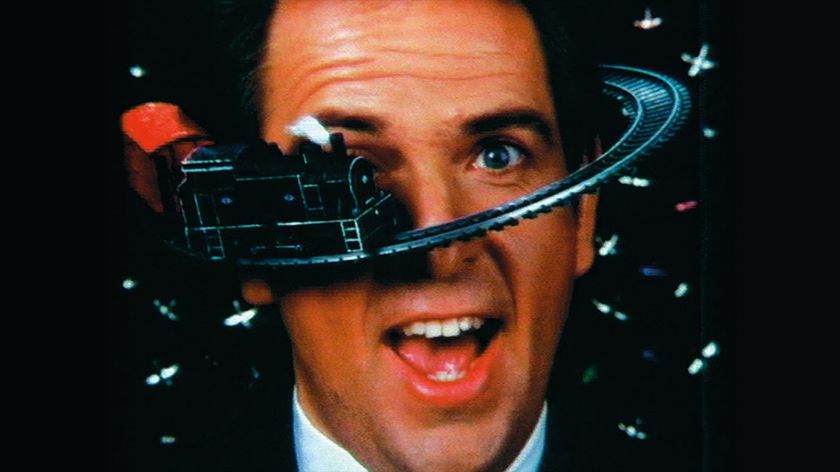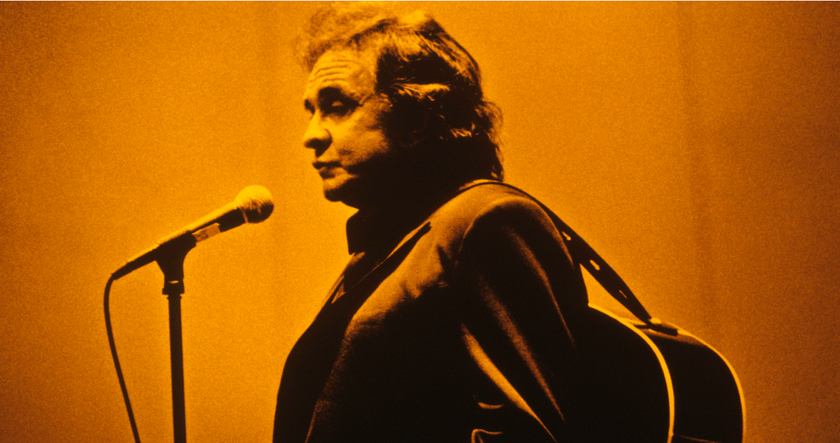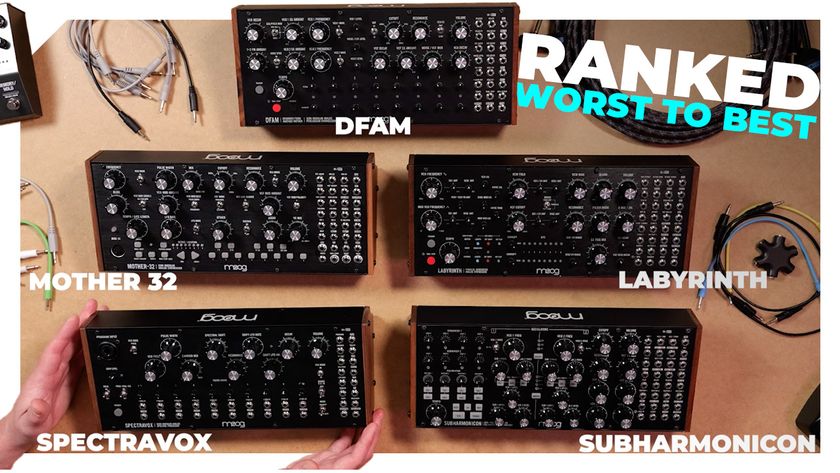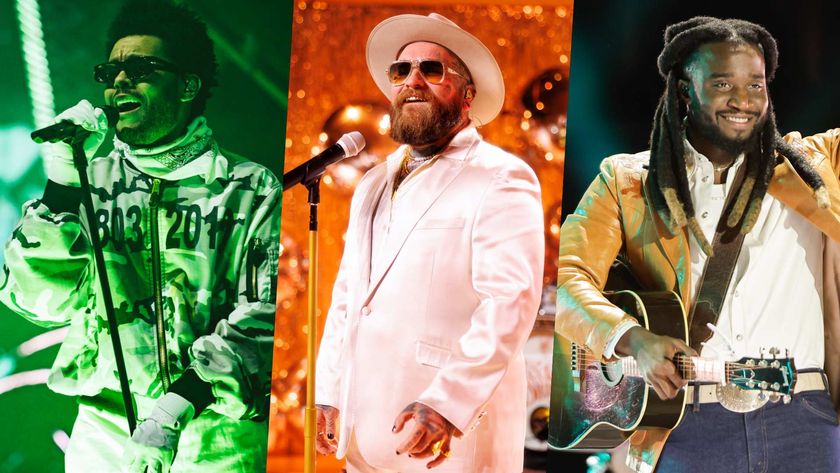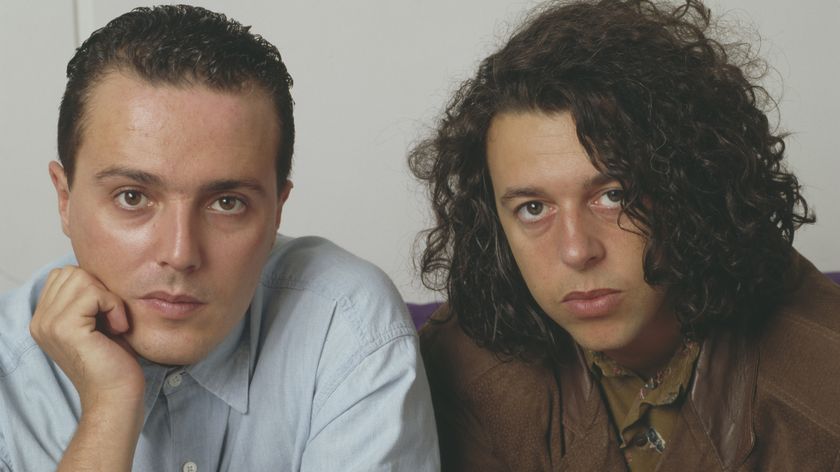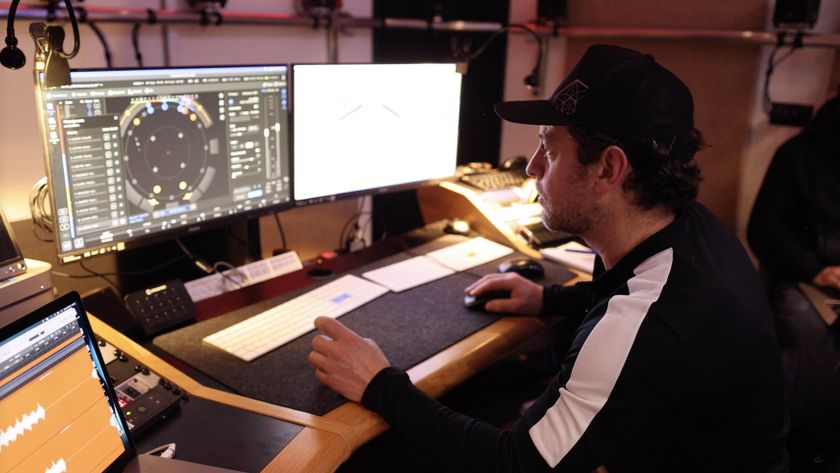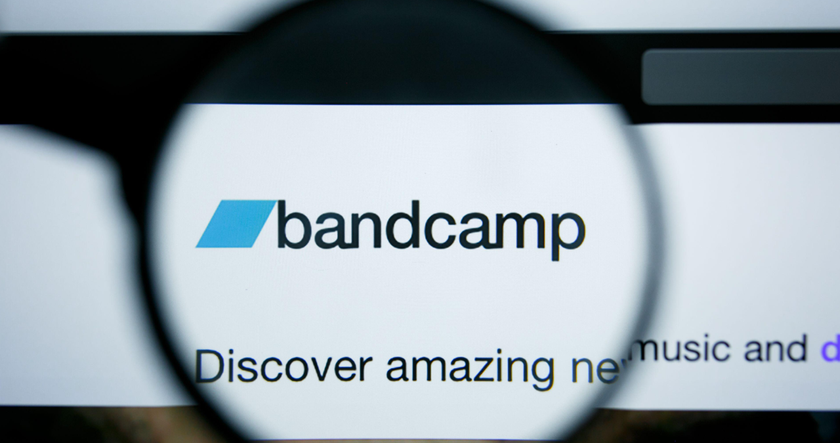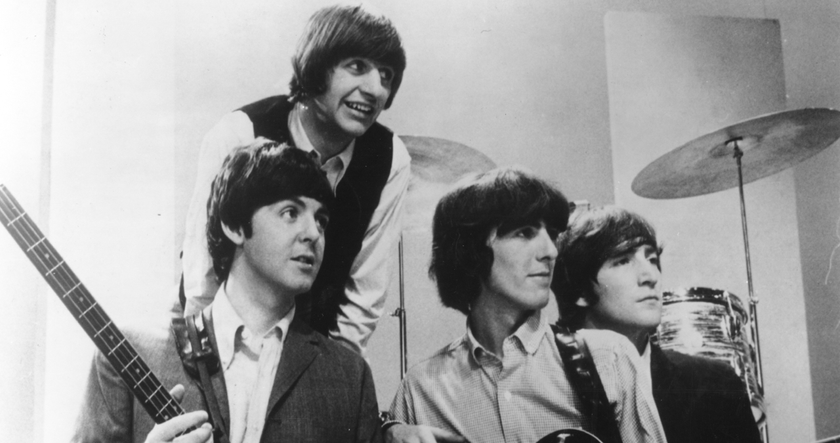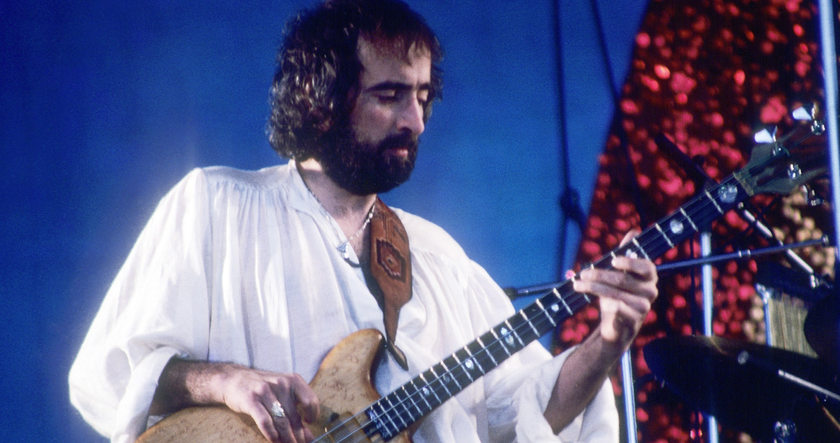Tom Middleton is on a journey to uncover the deep science of sound, sleep and more. "We all need to try and sleep better. If you get it right all the other systems work."
From deep house, techno and ambient to science-powered lullabies, Tom Middleton’s journey through music has always been all his own.
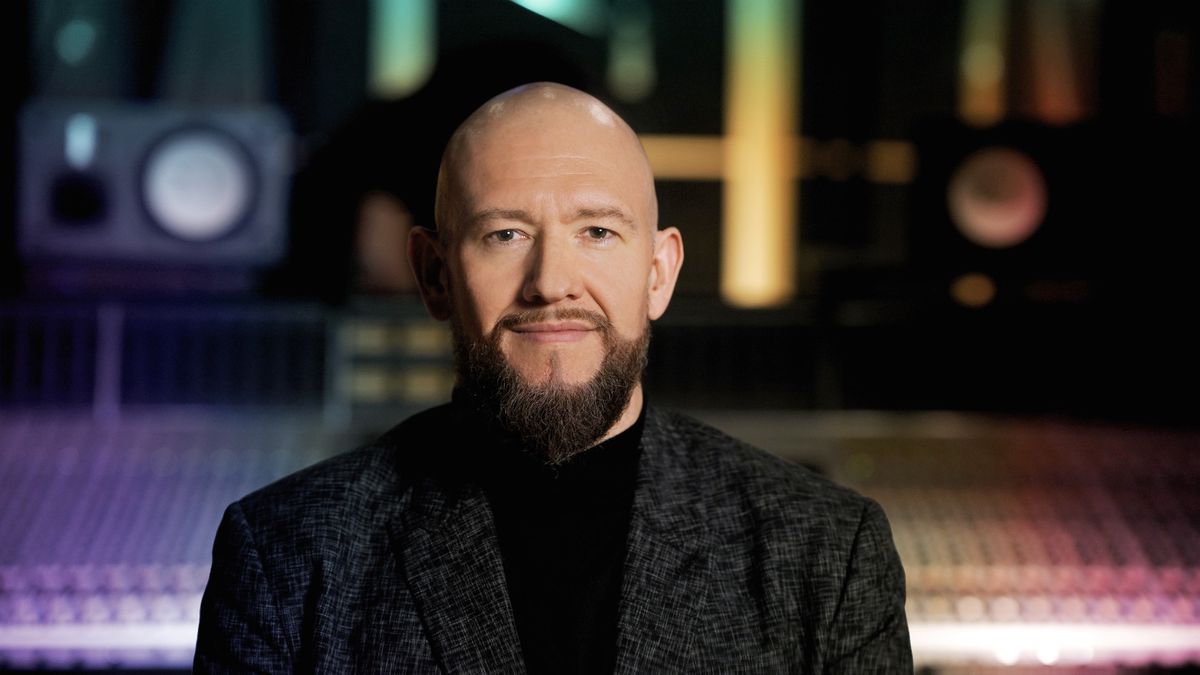
From early days working with Aphex Twin, through Global Communication with Mark Pritchard, to ever innovative, socially and spiritually grounded and impactful solo projects, Middleton has helped shape the electronic landscape that we all live in today.
He’s played to millions around the world and shared the stage with Kan(Ye), Snoop Dogg, Lady Gaga and Mark Ronson quietly observing the positive benefits of sound and music and developing an empathic and socially responsible approach to production and performance.
In the last few years Tom has moved into the social impact wellness sector and founded multi-award winning Studio Tom Middleton; a London based sensory innovation design studio, with a research, testing and validation neuroscience lab based in their Lisbon hub.
They innovate with psychoacoustics (heard sound) and vibroacoustics (felt sound). But not limited to just sound, they are exploring how different senses interact and influence one another to amplify beneficial wellbeing and performance effects.
And with the release of his new album, Spatial Sleep Music, he’s on a quest to help us all get a better night's sleep, increasing our energy and improving our mental health and well-being. And in this day and age that’s some perfect timing.
At the album's launch event at the L-Acoustics L-ISA experience space in North London, Tom’s guests were treated to a cutting edge spatial sound playback of the album and in-depth examination of the science behind the sound.
We caught up with Tom a few days later to discuss the project, the potent powers of spatial audio and music’s place in reducing suffering and improving human wellbeing.
Get the MusicRadar Newsletter
Want all the hottest music and gear news, reviews, deals, features and more, direct to your inbox? Sign up here.
How did you find the Spatial Sleep Music event?
It was fantastic. We had a really good turnout for both the 3D L-ISA Multichannel and the 4D Sensate experience - more on that later. Very positive feedback – and most importantly – some invitees were snoring! So it definitely worked. We gave everyone a mid-afternoon nap opportunity.
Companies such as Dolby, with Atmos and Apple with Apple Music and Airpods have made spatial audio a hot topic
Yeah, right now we’re in an interesting transition. Some people have access to tech that delivers or decodes the spatial audio format, such as Apple Music and Dolby Atmos. Some might still have their ‘surround sound’ 5.1 set ups for watching movies. But the idea of ‘surround sound’ for consumer music is still quite novel. Labels are looking at ‘spatialising’ their back catalogue of classic albums but I see an opportunity for spatial audio to be leveraged for wellbeing.
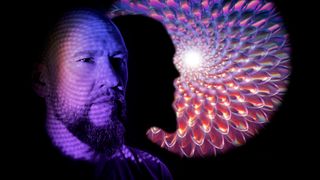
Tell us about the origins of the Spatial Sleep Music album
Platoon approached me to talk about creating an album for their well-being and mindfulness music catalogue as they’re working on more content in the area of meditation and sleep music. My name came up as I compose content for apps like Calm, Sleepcycle and Breathonics. In 2018 I released my Sleep Better album on Universal Music, so in the last four years I have built an extensive catalogue of wellbeing music that’s really working. The data is showing that every night millions of people are falling asleep to my music and soundscapes, so we know it’s working.
The problem we are addressing is the world is even more stressed, anxious, overwhelmed and sleep deprived which is having a negative impact on mental and physical health and wellbeing. My mission over the last decade has been to help reduce suffering by targeting what we should be spending a third of our lives doing. Sleeping!
We partnered with Paul Oomen from the Spatial Sound Institute in Hungary who researched and wrote a white paper on ‘the power of presence’ in spatial audio and it’s ability to deliver both an audio anxiolytic (reduction of anxiety) and an audio hypnotic (sleep inducing) effect.
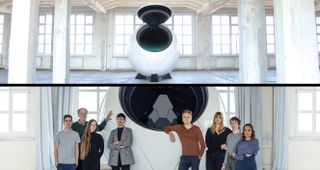
In hindsight I’ve been making this type of music since the early 90’s. Strictly speaking Global Communication in ’93-’94 was actually the template for a lot of this stuff. In our naivety back then Mark Pritchard and I were in a studio in Somerset creating ambient music as an antidote to the intense techno scene. We wanted to connect people with their emotions again. But the overwhelmingly positive feedback we got was that the music was really useful, therapeutic and cathartic. People were using the music for yoga and meditation, to process emotions and trauma, even to give birth to (as well as conceive!)
Why does spatial audio help people to relax more than conventional audio?
In mindfulness practices there’s this thing called the ‘power of presence’, being ‘in the now’, ‘in the moment’ – to stop thinking about the past and the future and just be present in the moment. Spatial audio amplifies that sense of presence. Listening to music is lovely but sometimes your mind might still wander. But with spatial audio a piano can be positioned precisely in a room space and it’s more believable. You feel like you’re in that space, and that creates a more active listening experience and deeper engagement.
Then we look at techniques to distract you in an unobtrusive and pleasant way. With Spatial Sleep Music I wanted to create an environment that made you feel warm and safe – an audio duvet, if you will – and the scenario I’ve created is a cozy cottage. So it’s small, it’s intimate. There’s a crackling fireplace in front of you – we’ve positioned that – there’s a cat purring in your lap. There’s rain on a window over here… A piano over there… And there’s something about that combination of ingredients that, when they’re spatialised, your mind starts to believe it’s in that space.
We’ve all been primed since birth and even earlier in the womb, building up a library of experiences and feelings pinned to sounds we hear. So here we’re using sound memories to re-trigger positive experiences. Spatial audio is more believable because it’s more immersive. It brings you into this tranquil safe world. It takes you away from the world of anxiety and hypervigilance we’re mostly experiencing surrounded by all our gadgets that are pinging left and right. So an hour before bedtime you can put the headphones on and dive in.
Tell us about the journey the listener goes on
The first part is very literal. The room I’m presenting is very precise. But over the course of ten or fifteen minutes I start moving things and expanding the space without you really knowing.
The resting heart rate is about 80 beats per minute and we love to synchronise to rhythmic pulses – even if they’re subliminal. This is called entrainment. If the track is slower than the resting heart rate you start to breathe more slowly, your heart rate and blood pressure reduces, your cortisol levels are lowered. It’s sound that is literally slowing you down.
So once we’ve caught your attention and we’ve slowed you down we take you on a lovely dream journey where you fall asleep in a cottage and you’re warm and safe. I’m leveraging every sonic psychology trick in the book to make you feel less anxious, more relaxed, distracted and present and then send you off in a blissful dream state.
I’m midway through a Masters in the neuroscience and behavioural psychology of music right now so a lot of the music I was creating over two decades ago now makes even more sense in this context of well-being functionality.
What’s the process for mixing in spatial audio? How are the sounds positioned?
Apple use a version of Dolby Atmos for their spatial audio and the way it works is that the virtual room that you mix in is basically the equivalent of the physical Atmos room that you’re in. Most Atmos rooms have a similar shape and size. But what I wanted to do was to take the walls away and drop you into space… So I had to bake in some of my own spatial effects to reduce the sense of virtual room reverb simulation so that sound dissipates outside of the constraints of the virtual Atmos room.
I wanted to push the boundaries of the format. Currently open spaces without walls such as the sound of being outside in nature, by the sea, lying under the stars is very difficult to recreate and that’s the challenge we had.
Writing music for sleep must be a challenge. Introducing musical elements without breaking the spell?
In a way I’m creating a functional pre-sleep soundtrack. At one moment in Spatial Sleep Music there’s the sound of a clock which I intentionally slow down. Subliminally influencing your internal rhythm to synchronise and slow down along with the ticking of the clock – literally slowing down time and then dissolving it into space so you don’t notice it’s gone. The trick is to execute very slow blends with smooth high and low pass filter automations. Or – through behavioural psychology – I may want you to notice something so I will intentionally place or move sound objects in a particular way, then I can blur and blend and make things drift off into space.
Did you write the parts for the piano, harp and cello?
They’re all improvised. What I said to the musicians was to imagine that everything you play has to help put infants to sleep. It’s that simple. Can you play softly, gently and slowly and with enough care to deliver that sense of safety and comfort so the listener can enter that ultimate state of vulnerability - to be ready to fall asleep.
I recorded parts in the Platoon main studio at Tileyard in North London with their amazing engineer Ramera Abraham. It’s a stunning space with a really great energy and the loveliest team you could imagine. Classical Pianist Christina McMasters played some incredibly sensitive and emotive passages. Ruby Aspinall played the most angelic and ethereal harp sections. I had no idea that she would be able to articulate such perfectly dreamy sounds. If you think about all the classic movies where there is a dream sequence, and in Renaissance paintings depicting scenes of heaven, typically they feature harps. We already have those associations baked in.
And the guitar parts are from my old friend Andy Sherriff from Chapterhouse. Incidentally theirs was the first album we remixed as Global Communication entitled the Pentamerous Metamorphosis which actually got us our first record deal with BMG where we went on to make the 76:14 ambient album. So it’s a lovely full circle to reconnect with him again and integrate his dreamy guitar textures.
There’s some lovely synth and a choir.
I created a choir pad from all of our voices. Just ‘ah’s and ‘la’s that I recorded and made a sample patch with. So the choir you hear later on is in fact all of the musicians on the album. We also sampled a Hammond organ with some lovely hypnotic slow-down rotations of the Leslie speaker which is so soothing to listen to.
How do you choose sounds for sleep?
I create these organic harmonically rich and satisfying audio blankets to support you rather than specific sounds you can identify. Unless I want you to pay attention to a particular sound and make you more ‘present’. This blanket is underpinned with warm saturated sine wave sub bass to play those satisfying root notes. On a good system you can feel the infrasonics nicely. The harmony and warmth is then punctuated with mid and top frequency range elements.
The rest is sounds I’ve sampled in the studio. Creating patches with them. That’s basically what I do – creative sampling – right from back in the day watching Richard D James, Aphex Twin creating music in his bedroom and garage; “Everything you can hear can be turned into music. You can make a sample patch out of pretty much anything and play it.”
What kind of gear are you using right now?
My audio playground and virtual neuroscience sound lab pivots between Logic, Live, Reason and Reaper. A hybrid digital and analogue set up with Eurorack, synths, plug-ins, pedals and select 500 series high end outboard for dynamics, eq and saturation outboard. I tend to mix out of the box and record to multitrack tape, for those warm analogue idiosyncratic imperfections. Creation and composition happens in Logic with Reason plugged in, and arranging and sound design happens in Live mostly.
And Live is the sampler. I tend to see it as a sound manipulator. I’ll drop things in – a piece of audio that I’ve performed and recorded. Process and reprocess it. Add layers… Sometimes I’m using three or four channels of audio to create harmonic content. So it’s not just a ‘sampler’ but more of a 3D digital audio painting system!
That explains why I’ve never been able to accurately identify a sound or a synth on any of your work. So you’re not one to reach for the Korg M1 organ bass?
Well, actually I made a couple of sample packs for Loopmasters ‘Deep Bass House’ and ‘Dub Bass House.’ For these I dug back into the ‘90s set ups, I sampled an M1 organ and classic vintage house and techno sounds because I still love them! I wanted to collect them all so people could play with these authentic sounds that are very much ‘of a time’. I’m still enamoured with those classic Detroit techno set ups. Give me a 909, a 727, an 808, 606, 303…classic Roland combinations! There’s nothing wrong with them but you just ‘know’ them. The 727 is often overlooked but to me has so much character for Latin percussion sounds.
If I think back to working with Matthew Herbert, working with Beardyman and in the beginning working with Aphex Twin, it was always about unlocking the power of the imagination and using anything that you can record with a microphone to create your own unique sounds. I love that mentality. It’s creatively empowering.
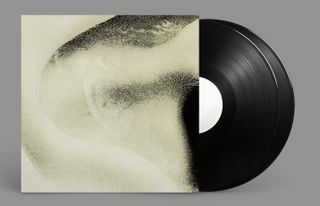
You mentioned the Global Communication ambient album 76:14. What exactly are we listening to there?
You’re listening to myself and Mark Pritchard in a garage conversion studio in Crewkerne, Somerset. We had a Studiomaster then Mackie desk, a Casio FZ-1 and an Akai S950. There’s a Roland Juno 106 and SH101, a Korg Wavestation, Kawai K1 and we recorded to ADAT. But mostly it was a lot of creative sampling. Even the drum machine sounds you hear, we tweaked them. You can’t hear any classic drum machine sounds on that album at all.
A lot of the sounds were actually leftovers from sessions where Mark had gone to local factories to sample for the first Reload album. And when we were doing Reload, John Parish, Polly [PJ] Harvey’s partner, came in and played some pots, pans and pieces of metal for us.
And are you playing or programming?
For the first few years we did everything with a Kawai Q-80 sequencer which took forever. Mark was like Track and Field on it, hammering buttons! So when we got an Atari with Cubase it was a dream!
And we always ‘performed’ the mixdown. That was the key to it. We had an Alesis Quadraverb and a Boss SE70, lots of outputs from the samplers and we made lists and notes of what to do and when. We had to be smart and frugal with what we had. We’d man the mixer, hit the DAT into record and slide here… fade here… EQ here… Adding live effect manipulation… We ‘performed’ the album to an audience of one – Mark’s amazing grandmother – ‘Reload Nan’!
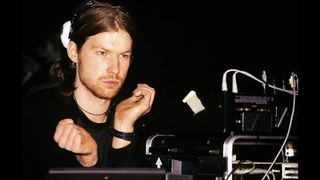
Tell us about working with Richard D James?
It’s interesting that the West Country seems to have spawned many artists with a similar interest and radical no rules approach to electronic music creation. Luke Vibert, Rephlex Records, later on Herbert. I’m very grateful to Rich for sharing his process. Learned so much from observing him, and Mark Pritchard at work in the studio, basically my two teachers! Rich had a Casio FZ-10M – the rackmount version. And a Roland SH-101. With the lid off!… Which was my first foray into the world of analogue synth electronics and circuit bending.
He’d extended the frequency range of the oscillator down to subsonic, and up to ultrasonic and we’d joke about communicating with dolphins and neighbourhood dogs. Watching the speaker cones push out 3 Hz - basically Delta wave isochronic entrainment! But when I saw that SH-101 with the lid off I thought ‘hmmm I get you, why be constrained’. He was not going to allow anyone to prohibit him from doing things in his way. He started hacking and circuit bending his kit to make everything unique.
What other gear is in that early Aphex set up?
He used Octomed on the Amiga as the sequencer and an Alesis Quadraverb… And that was it. Seriously. So the SH-101 was his sound-making device for the squidgy acid-y stuff and everything else was samples. And a Roland R8 drum machine so the 808 sounds came via the R8 so you’d get a slightly more digital take on that classic sound.
When the cash started coming in he clearly started investing in classic gear and the rest is ‘Analord’ history. I don’t know anyone who has a more comprehensive synth and Eurorack collection. Just read the back of his last LP for starters.
If I listen to those early 90’s works now, I think he basically invented Trap rhythms. A lot of those triplet hi-hat patterns that are associated with trap and rap, he was making them back then on the R8.
And how are you for hardware collecting?
Well, I’ve owned pretty much all of the classics. But having things like a modded EMS Synthi sitting there and not getting used with all the excitement and potential of being liberated from a studio and able to create anything you can imagine in the box, anywhere on Earth. So I sold a lot of it. Of course there are some things I’d love to play with again, but I’m happy with my set up. Dave Rossum’s SP1200 reissue is on that list - I just want my Boom Bap beats machine back. Lol!
So rather than going back to the classics I got into Eurorack kit and I’ve been thoroughly enjoying that. It’s a different discipline but so satisfying that joy of unexpected discovery and experimentation. The joys of ModularGrid, planning the setups… and the self-imposed limitations such as specific width rack space you have to make choices to fit. I like the idea of being able to select specific modules and create unique patches for specific purposes. I’ve got quite into the sound science and sound design side of things, using the Dave Jones Design O’Tool Oscilloscope module to test things in the lab. So one of my modular ‘fun size’ lunch boxes runs alongside an EEG headset for brain waves, ECG for heart rate monitoring, a chest strap for HRV (heart rate variability) and GSR (galvanic skin response) for measuring arousal. So the neuroscience aspect merges perfectly into the sonic arts and well-tech world.
What’s a favourite bit of kit right now?
The Subpac is a brilliant piece of wearable vibroacoustic tech. Everything from 120Hz down to 1Hz you can feel through your spine from low frequencies at the base to higher range at the top. This makes it easier to make decisions when mixing bass.
Highly recommend for a producer who doesn’t have an acoustically treated and soundproofed space to really crank it, you can feel the infrasonic low end information.
My guru, Lewis Hopkin at Stardelta Audio Mastering has got PMCs and a perfect acoustically treated room but he advised me that a pair of Audeze LCD-X headphones combined with a Subpac for mixing will give you a pretty solid set up.
I can make accurate decisions with headphones and a Subpac and then go into a room and hear how it’s translated. It’s particularly good for giving you that club system feeling.
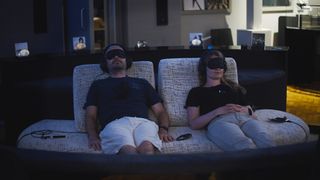
Tell us more about the Sensate device that featured at your event too
So it’s a wearable ‘vagal-toning’ chest pebble from Stefan Chmelik. The vagus nerve is the longest in the body connecting everywhere, all the way up your spine ending up behind your ears. It’s constantly sending electrical signals modulating your nervous system. Your nervous system oscillated between rest, digest and relax state through a homeostatic midway balance point – neither stressed nor too relaxed – and up towards pleasant ‘eustress’ such as that which you get from exercise. Then right through to fight, light, freeze or fawn states of fear often triggered by anxiety and uncertainty. The Sensate device rests on your sternum and it uses vibro-acoustic pulses to stimulate the vagus nerve and help calm you down into a more relaxed state.
It’s not rhythmically in time or harmonically tuned with the music, it’s a kind of sonic massage that stimulates the vagus nerve. It’s super-interesting and it looks pretty cool as well wearing this grey pebble with a glowing cyan light.
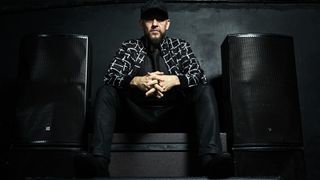
Why the switch from dance music to sleep music?
I got severe burnout from the relentless touring, and my nervous system was a wreck. Anxiety levels through the roof. When I think about some of the crazy routings I did… A gig in LA, over to Sydney, up to Tokyo, across to Dubai, through Europe and then back to New York, all in four weeks. Mind, body and soul decimated! I found it so hard to recalibrate after these circadian time shifts.
For my sanity and ability be a healthy, happy and productive human being I had a renaissance moment. I thought about all the ambient music I’d been making so I created a concept album called Lifetracks which was all about creating a soundtrack to life. Useful tracks that could support you through the stresses of daily life. This was the start of functional music, for well-being, performance and productivity.
And the first thing I did was to sort out my sleep. So I trained as a Sleep Science Coach to better understand sleep architecture and sleep hygiene best practices. We all need to try and sleep better. If you get it right all the other systems work. You make better nutritional decisions, your fitness and exercise is optimised, you’re better at work, studying, and memory retention. The problem is that we’ve extended sunlight. Edison. Thanks a bunch, you stopped us using those natural sunsets to cue us to go to bed.
Part of the mindfulness approach to pre-sleep relaxation is listening to music, so I made Spatial Sleep Music. I’ve done tracks for the Calm app, and a sleep coaching program for the Sleep Cycle app clocking up millions of streams and helping millions sleep better every night. For me it’s all about scaling social impact.
It’s interesting that you mention streams there. So ideally people will be listening to Spatial Sleep Music once a day every day forever?
With the Sleep Better album I did for Universal Music I used a glockenspiel and a harp at the start in a very Disney-esque way to cue people into that ‘magic realm’. I got parents telling me that they use it every night, four years down the line. Their children are asleep within minutes because that sound has primed them for the positive experience of falling asleep.
And once you’ve got us all sleeping better, what else can music do for us?
We have a number of really interesting and impactful live projects all looking at transforming suffering and human problems. There’s Moonai, an ’audio analgesic’ solution which is a Femtech startup leveraging binaural beats to down regulate the nervous system, reducing period pain perception.
Shift work is an interesting one – using music to help someone who has to stay up late for work on some nights to recalibrate their sleep. Using sound in an educational environment to help with focused attention, retention and learning. And in Healthcare environments to reduce anxiety and accelerate healing. Hospitality is quite an obvious one, but surprisingly, the industry is still way behind the curve in terms of using sensory science to help guests sleep properly and leave feeling healthier and deeply rested.
We recently worked with Dr Sturm skincare to deliver functional sound branding and anti-inflammatory soundscapes that support their in spa sessions and to take home for pre-sleep rituals. And without saying too much, they may be released in a familiar format in the not too distant future.
Then there’s the really fun stuff like one of the projects for the Wund / Therme Group’s huge ‘urban oasis spa’ spaces in Germany where we’re creating immersive sound spaces and real sound saunas integrating visuals and lighting to soundscapes for mindfulness practices such as meditation, humming and breathwork.
There’s a car brand that I can’t say much about at the moment but if you think about it EVs are currently fairly silent. What can we do in that space? What do you use sound for in a vehicle? Obviously there’s safety but we also want to have fun, and be healthier and happier. So what can we do with audio…felt sound and vibration…scent…lighting..head up displays that become your AR window? It’s an amazing canvas to explore.
I created some music for Nissan called the Dream Drive Lullaby a few years back which was awarded the gold SABRE award for innovation, helping infants sleep while also reducing carbon emissions.
I’m enjoying functional sound branding which elevates the typical proposition of a blip blip bing bong sound logo by making sound identities that actually have a measurable effect on wellbeing. We recently won a gold award for a huge data company called Syniti.
And not forgetting music is and always will be a fantastic medium for story telling, inspiring imagination and raising awareness. I released my debut GCOM - E2XO album at the end of last year. Ten years in the making, it explores humankind’s near future explorations to find an Earth 2.0. I’m fascinated with analogues of Earth – exoplanets that have an ESI – Earth Similarity Index – as close to 1 as possible. The album also draws attention to the current escalating climate crisis to remind us to be more responsible planetary stewards back here on Earth.
I collaborated on a few tracks with Thomas Denis aka Qebrus who sadly passed away in the middle of the project. If you’re not familiar with his work it’s the most alien sounding music I’ve ever heard. Even Richard Aphex agrees on that point.
In closing, maybe it was somewhat prophetic that back in ‘93 we wrote Global Communication’s manifesto about reconnecting with our five senses and “emotional expression through sound”. Now I’m actually doing exactly what we wrote back then!
As a special bonus for all of you hard-working night owl musicians having difficulty getting some shut eye – Tom has given us ten tips for a better night’s sleep. Night night!
Tom's albums Sleep Better and Spatial Sleep Music are available on streaming platforms now. While the Calm and Sleep Cycle apps can be found on your favourite app store.
And find out more about Tom's work here.
Daniel Griffiths is a veteran journalist who has worked on some of the biggest entertainment, tech and home brands in the world. He's interviewed countless big names, and covered countless new releases in the fields of music, videogames, movies, tech, gadgets, home improvement, self build, interiors and garden design. He’s the ex-Editor of Future Music and ex-Group Editor-in-Chief of Electronic Musician, Guitarist, Guitar World, Computer Music and more. He renovates property and writes for MusicRadar.com.

“My love letter to a vanished era that shaped not just my career but my identity”: Mark Ronson’s new memoir lifts the lid on his DJing career in '90s New York
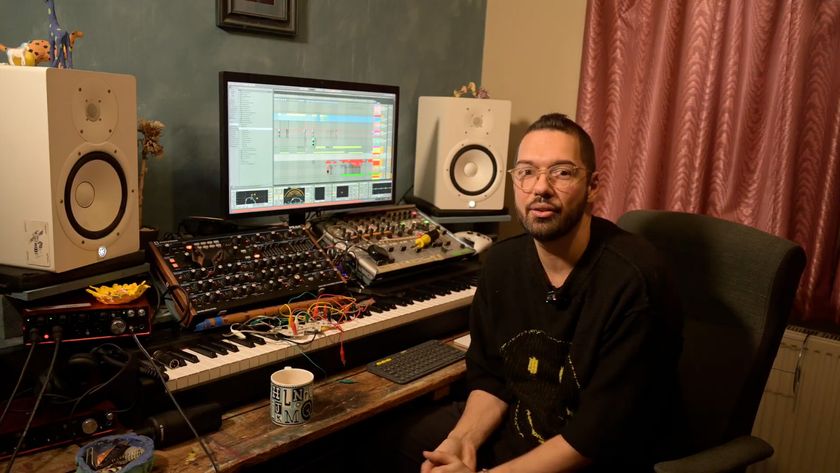
“I'm always starting up sessions and not finishing them, but I don't see that as unproductive”: Virtuosic UK producer Djrum talks creativity and making Frekm Pt.2


